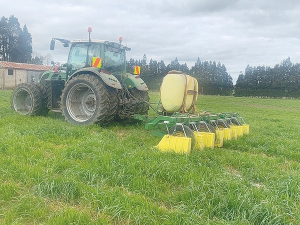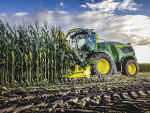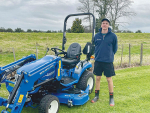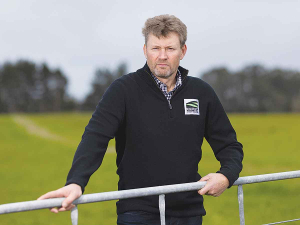Paul Hunter farms 240ha of well drained Mairoa ash soils at Mulroy Farm, south of Te Awamutu in the Waikato.
Cropping centres around 180ha of forage maize that when harvested reverts to annual ryegrass, red clover or annual ryegrass-clover mix, with the latter established by strip tilling.
Having grown maize, initially for grain, since the 1960s, the cultivation regime until 2017 followed the “conventional” ploughing route, followed by a power harrow to establish a seedbed. Since 2018, strip tillage has been the preferred method for all maize crops, although one trial paddock has been striptilled since 2013.
Alongside the maize cropping, the farm also carries 100 bulls on permanent pasture, 150 that are fattened on the annual ryegrass and around 200 dairy cows brought onto the farm for a winter grazing period of around six weeks.
Having chosen the strip-tilling route, Hunter explains that he saw many benefits, not least reduced cultivation costs, reduced run-off in adverse weather events and retention of organic matter in the soil profile.
Part of the Growers Leading Change Project established by the Foundation for Arable Research (FAR) and the Ministry for Primary Industries (MPI) in late 2020, Mulroy Farm became one of four Pathfinder farms in October 2022, with the aim of testing new innovation and techniques, aided by the FAR research team. A current trial is looking at nitrogen-use efficiency in maize growing, with an emphasis on residual N post-harvest and usage over the growing season.
Deep N post-harvest sampling showed residues that ranged from 23kg/ha to 117kg/ha, with an average reading 60kg/ ha over the test area. Looking at the establishment regime, pre-planting designated maize paddocks are sprayed off, followed by the installation of the cultivated areas where maize will be planted, using an American- built, 8-row, Soil Warrior Unit. Drilling is carried out using a John Deere planter equipped with Precision Planting Technology, to allow variable rate planting with seed rates from 85,000 to 110,000 seeds per ha, based on historical data and remote sensing.
During the trial, three nitrogen application rates were undertaken, using 210kg Sustain N/ha, a variable rate application that ranged from 200 to 285 kg/ha, with the final option at 420kg Sustain N/ha.
However, at harvest on 14 March 2023, analysis of starch, sugars, ADF and NDF threw up some interesting findings. On average, the area applied 420 kgN/ha showed 3% lower dry matter and the variable rate area delivered the highest yield at 29 tonnes/ha, compared to 26.5 and 27.8 tonnes/ ha in the other areas. The lowest starch percentage was in the variably applied area, although it also offered the highest starch yield per hectare.
Looking at fertiliser costs per tonne of dry matter, the 219 kg/ha application rate saw an average cost of $10.50/ tonne DM, the variable rate area at $11.80/tonne and the 420 kg/ha area the highest at $21.80 per tonne DM (all figures were based on a Sustain N cost of $1,380/tonne- June 2022).
In summary, the initial stages of the trial suggest that growers should make greater use of Deep N testing pre-establishment, in so doing, getting a better idea of residual N and the ability to adjust total N use over the growing season. FAR researchers also suggested that more work needs to be done on truck-based application methods that typically delivered wide ranging rates of application, often linked to topography. While also suggesting strip-till reduced establishment costs, the question was raised about the differences in efficacy between granular and liquid nitrogen over the growing season.
Home-Built Spray Rig
As part of Paul Hunter’s establishment process, three slightly different methods are employed. Areas planted in pure red clover are baled for winter feed, sprayed off, strip tilled and planted.
Areas sown to annual ryegrass are generally given a first grazing during late May and June, then a home-built 8-row spray is used to establish 10-inch wide areas for the next season’s maize crop. This offers the opportunity to preprepare the ground for the maize crop, but also allows subsequent grazing or harvesting, before the remainder of the ground is sprayed off and strip-till and planting in September. Hunter suggests that the open nature of the root structure in the pre-determined areas means that the strip till process is easier and offer time savings of up to four weeks.
The final area, typically making up 40 to 50% of the 180ha maize area, is the post-harvest establishment of an annual ryegrass/red cover mix.











